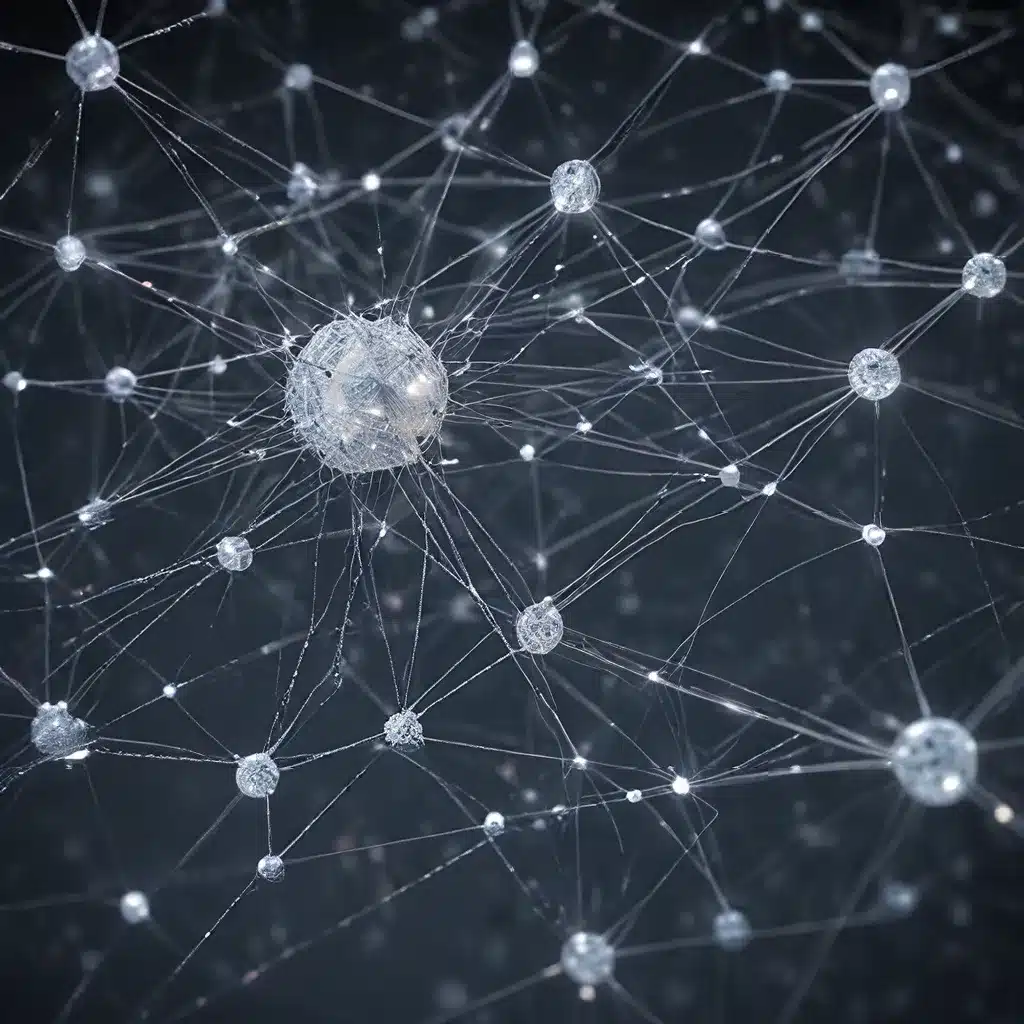
The Evolution of Sensor Networks: From Isolated Devices to Collaborative Ecosystems
The rapid advancements in sensor technology and the Internet of Things (IoT) have transformed the way we interact with our physical environments. Sensor networks, once consisting of isolated devices, have evolved into complex, interconnected ecosystems that enable unprecedented levels of data collection, analysis, and real-time decision-making. These distributed systems, consisting of numerous sensor nodes, communication protocols, and data processing algorithms, play a crucial role in a wide range of applications, from industrial automation and smart cities to environmental monitoring and national defense.
As the scale and complexity of sensor networks continue to grow, the need for efficient coordination and resilient operation has become increasingly paramount. Distributed algorithms have emerged as a powerful approach to address these challenges, unlocking new possibilities for collaborative sensing, adaptive decision-making, and robust network operations.
Distributed Algorithms for Sensor Coordination
At the heart of these advancements are distributed algorithms – computational techniques that enable sensor nodes to coordinate their actions, exchange information, and adaptively respond to changing conditions without the need for centralized control. These algorithms leverage the inherent parallelism and redundancy of sensor networks to enhance collaboration, resilience, and scalability.
Collaborative Sensing and Localization
One of the key benefits of distributed algorithms in sensor networks is their ability to facilitate collaborative sensing and localization. By leveraging cooperative algorithms, sensor nodes can work together to enhance coverage, improve accuracy, and reduce energy consumption compared to standalone devices.
Research has demonstrated the potential of reinforcement learning-based approaches to sensor placement, where nodes can dynamically adjust their positions to maximize collaborative perception and situational awareness. These techniques can be particularly valuable in contested environments or poor visibility conditions, where a single sensor may be insufficient to provide a comprehensive understanding of the surroundings.
Resilient Network Operations
Sensor networks operate in diverse and often unpredictable environments, where node failures, communication disruptions, and security threats can compromise the integrity of the entire system. Distributed algorithms can play a crucial role in enhancing the resilience of these networks, enabling them to adapt and recover from such challenges.
For instance, coordination strategies for multiple autonomous unmanned ground vehicles (UGVs) can enable collaborative deep ground surveillance, even in the face of communication bottlenecks or node failures. Similarly, hierarchical episodic memory frameworks can help sensor nodes learn from past experiences and optimize their decision-making processes, leading to more efficient and reliable operations.
Scalable and Adaptive Network Management
As the number of sensor nodes and the complexity of sensor networks continue to grow, centralized management approaches become increasingly impractical. Distributed algorithms offer a solution by enabling self-organization, load balancing, and dynamic reconfiguration of sensor networks.
Research in this area has focused on developing intelligent radio resource slicing strategies, which can create dedicated network slices for different applications and devices, ensuring optimal performance and efficient utilization of resources. Furthermore, decentralized positioning algorithms can enable secure and reliable real-time localization of connected devices, a crucial capability for applications ranging from asset tracking to emergency response.
Securing Sensor Networks: Addressing Vulnerabilities and Resilience
While the benefits of distributed algorithms in sensor networks are substantial, the increasing interconnectivity and complexity of these systems have also introduced new security challenges. Sensor networks are vulnerable to a wide range of attacks, from data and model poisoning to electronic control unit (ECU) exploits, which can compromise the integrity, availability, and confidentiality of the entire system.
Researchers are actively working to address these issues, focusing on the development of secure communication protocols, anomaly detection mechanisms, and resilient network architectures. Machine learning techniques, such as encrypted network traffic analysis, are being employed to identify and mitigate potential threats, while ontology-based reasoning is enabling the dynamic coordination of sensor assets in the face of attacks and failures.
Emerging Trends and Future Directions
As the sensor network and IoT landscapes continue to evolve, several emerging trends and future directions are shaping the field:
-
Multimodal Sensor Fusion: Combining data from diverse sensor modalities, such as cameras, thermal imagers, and LiDAR, can lead to enhanced situational awareness and semantic understanding of complex environments.
-
Human-Agent Teaming: Bridging the gap between human operators and autonomous sensor-equipped agents through natural language processing and knowledge representation can enable more effective collaboration and decision-making in contested scenarios.
-
Energy-Efficient Design: Developing energy-aware algorithms and hardware-software co-design strategies can help maximize the operational lifetime of sensor networks, particularly in resource-constrained or remote deployments.
-
Secure and Privacy-Preserving Sensing: Addressing the security and privacy concerns associated with sensor networks through federated learning, differential privacy, and homomorphic encryption can build trust and enable wider adoption of these technologies.
-
Testbeds and Simulation: Establishing comprehensive simulation environments and experimental testbeds can accelerate the development, testing, and validation of distributed algorithms for sensor networks, enabling seamless transition to real-world deployments.
By embracing these emerging trends and leveraging the power of distributed algorithms, the sensor network and IoT community can continue to drive innovation, enhance resilience, and unlock new possibilities for collaborative, adaptive, and secure systems that transform our interactions with the physical world.
Visit sensor-networks.org to explore more about the latest advancements and applications in this rapidly evolving field.